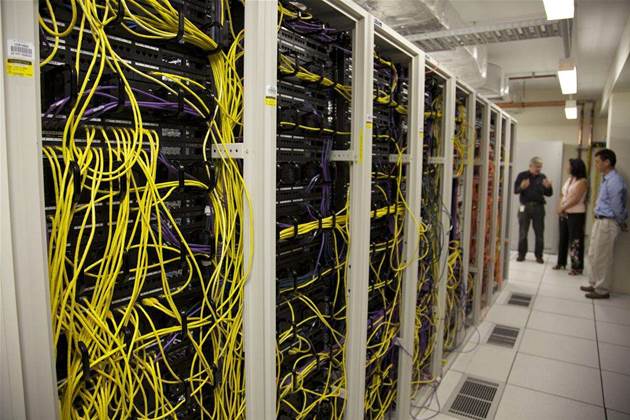Data centres the world over freely advertise their facilities according to a tiered resiliency metric invented by Kenneth Brill, founder of the Uptime Institute, but few are prepared to pay to be judged on it.

Brill first published the four 'tiers' of data centre resiliency in 1996, responding to a need for IT and operations managers to justify the exorbitant cost of building highly available data centres to management.
The standards have been almost universally adopted - with data centre operators often claiming a superior level of resiliency by evoking the terms "Tier III" or "Tier IV".
This month, Brill heads to Sydney to discuss "the meltdown of the benefits we have been enjoying from Moore's law" at the DC Strategics conference in Sydney. But Brill will also be looking to meet with business prospects. The Uptime Institute is partly funded by official accreditation schemes, in which consultants from the institute inspect and provide advice to data centre builders on achieving their desired tier level.
Unfortunately for Brill, precious few of the data centre operators evoking the language of his standard appear to be prepared to pay for this service.
Of those in progress in Australia, 'Technology and Data Center Services' is the only company listed under 'concurrently maintainable' data centres on the Institute's web site - that is, data centres certified Tier III by the Institute.
"There are plenty of people that use and abuse this standard," Brill told iTnews en route to Australia. "Anybody who makes a self-claim to a tier level needs to be looked at with a jaundiced eye."
Brill said unaccredited facilities often advertise a self-claimed tier level that is "off by at least one tier, if not two."
"This can be very disappointing to the owner, who spent good money but missed the mark," he said. "Often times, they could have fixed it had they got some help in the beginning - usually it costs no more to do it the right way."
Brill wouldn't share what it costs to get accredited - but says it cost a "fraction of a percent of the project."
Data centre operators in the United States have reported that accreditation cost one percent of their total build budget (a US$4.5 million build cost US$45,000 in consulting fees from Uptime).
"We don't make any money," Brill said. "We serve a validation function."
Common mistakes
Brill said that one of the most common mistakes organisations make is to believe they need to achieve the highest levels of resiliency for data centres that simply don't need it.
"We are agnostic to what tier level you should have," Brill said.
Very few businesses, he said, can justify a Tier 4 standard data centre - the highest on Uptime's list - which suggests the data centre's plant is completely fault tolerant to failure.
"We don't even believe that most data centres have the business failure consequences to justify Tier 4," he said. "An outage would have to impact earnings for the quarter."
Many businesses do require Tier III however, which would enable the facility operator to perform maintenance on any part of the mechanical or electrical plant in the facility "without IT shutting down."
Too often, Brill said, organisations can't truly draw a circle around every component and know that the IT systems would keep running if one of each of them was taken offline for maintenance. It usually means that maintenance isn't kept up to scratch.
"When it fails, it will be a much more catastrophic failure," he said.
Brill said the Tier system is important not as a goal for every data centre operator to strive towards, but as a metric for matching build costs to business requirements.
"Google is a Tier One design and that is absolutely the right business decision for them," he said. "Our own little computer room is Tier One - and that is the right decision for us.
"But if you do justify Tier 4, you need to know that it's what you are getting."
Kenneth Brill is the keynote speaker at the DC Strategics conference in Sydney on August 13. His topic - the "meltdown of the benefits of Moore's Law", will address the increase in capital costs in most data centres. Read on for our in-depth interview with Brill.
Editor's note - The original text of this story inferred that Leighton-owned Metronode advertised its facilities as being Uptime Institute accredited.
The company has since clarified that this is only in relation to the equipment the company plans to use to build its next generation data centres, which conform to 'Uptime Institute accredited designs'.
"Metronode has initiated discussions with the Uptime Institute toward the accreditation of these new facilities and operations, and we are fully supportive of the need to protect the value of Uptime Institute accreditations," the company said in a statement.


.png&h=140&w=231&c=1&s=0)




 iTnews Executive Retreat - Security Leaders Edition
iTnews Executive Retreat - Security Leaders Edition












_(1).jpg&h=140&w=231&c=1&s=0)



